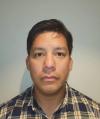Some writing provokes joy in reading through beauteous prose or by bringing clarity to dense topics, but other literature is compelling because it pinpoints the questions that matter most. John Sailhamer’s writing is the latter sort. I had not heard of Sailhamer before seeing The Seminary as a Textual Community: Exploring John Sailhamer’s Vision for Theological Education (Dallas: Fontes Press, 2021, edited by Ched Spellman and Jason K. Lee), but was intrigued by the topic and picked it up due to the foreword by Stephen G. Dempster and back cover recommendation by Kevin Vanhoozer. As the title indicates, Sailhamer examines what it means to be a school focused around the word of God, a topic John Webster’s Culture of Theology first prompted me to consider.
Though a small book, The Seminary as a Textual Community packs a powerful punch. The first part of the book is a long essay by Sailhamer, titled “The Nature, Purpose, and Tasks of a Theological Seminary,” that examines various aspects of Christian education, particularly addressing the content of seminary coursework and a seminary’s relationship to the church. Christian college or seminary leaders will likely find this much more stimulating than the average theological reader.
After Sailhamer’s principal essay comes a reflection section by the book’s editors, Ched Spellman and Jason Lee, both professors at Cedarville University. Spellman and Lee helpfully examine Sailhamer’s thought and engage with theological interpretation influencers like John Webster.
For most readers, the real gems come in the second half of the book, in the selection of Sailhamer’s shorter writings. For example, “Johann August Ernesti: The Role of History in Biblical Interpretation” examines hermeneutical challenges that are critical in Christian reading of Scripture yet are often unarticulated. This should be read alongside the preceding essay, “Cosmic Maps, Prophecy Charts, and the Hollywood Movie: A Biblical Realist Looks at the Eclipse of Old Testament Narrative.” Sailhamer here separates out the task of understanding the meaning of a biblical text from the task of trying to understand the events themselves as they occurred in history. This is not a move to undermine the historicity of the text, but to free hermeneutics to deeply study texts themselves. Sailhamer explains,
The task of understanding the events themselves is the task of biblical historiography. That, of course, is an extremely important task. It is not, however, the same task as biblical hermeneutics. Hermeneutics, as I understand it, always is and always should be devoted to discovering the meaning of the biblical text. To quote Sternberg, ‘the text itself has a pattern of meaning.’ (122)
While preachers may seldom articulate it, this question comes up repeatedly when exegeting the biblical text: how much historical recreation is helpful and necessary when understanding a text? And while extrabiblical historical evidence may help us understand what, for example, Jeremiah means when he speaks of “broken cisterns that can hold no water” (Jer. 2:13), if we are constructing an elaborate interpretation of a biblical text based on uninspired extrabiblical evidence, are we really on firm ground? Jamie Grant, for example, has argued along similar lines for caution in nailing down historical background for each Psalm.
Sailhamer here examines the “grammatical-historical method” and what it means (123). He provides his own explanation of how biblical hermeneutics has changed over the past two hundred years, bringing in figures like Hans Frei, Jans-Joachim Kraus, and Karl Augustus Theophilos Keil. Sailhamer’s explanation is not for the faint of heart, but it is worth repeated readings. He challenges readers to ask where authoritative meaning is found: is it in the words of the Bible themselves, or in the events behind them? In even couching the question this way, one can see how this framing helps orthodox believers combat the Protestant classical liberal approach of trying to identify the “historical Jesus” behind the Jesus presented in the biblical text.
Readers may find Sailhamer’s warnings alarming—he notes that this kind of thinking has subtly infected evangelical hermeneutics (136). The example Sailhamer gives is Milton S. Terry’s Biblical Hermeneutics: “According to Terry, ‘The grammatico-historical sense of a writer is such an interpretation of his language as is required by the laws of grammar and the facts of history’” (136). Sailhamer sees here a shift in the meaning of “grammatical-historical” exegesis, one that warrants “the use of all kinds of historical material in biblical interpretation” (138). Sailhamer prefers Ernesti’s approach: “Ernesti held to the classical orthodox view of inspiration. The words of Scripture were inspired, not the historical events (things)” (139).
Sailhamer isn’t the only conservative warning of misuses of the grammatical-historical method. J. V. Fesko, citing Geerhardus Vos, cautions,
Critical scholars, therefore, were merely interested in the grammar (what the text said) and the purported history of what the text claimed. The grammatico-historical interpretation of Scripture therefore used the scientific and historical investigation of the Scriptures to neutralize the revelation-principle (Deus dixii) of Scripture.
In other words, as we do grammatical-historical exegesis, we remember that God addresses us as we encounter the biblical text, making the reading and preaching of the word of God a means of grace. A grammatical-historical exegesis that reads the various parts of the Bible apart from the coherent unity of the Scriptures around Christ falls short of the basic sine qua non of exegesis: submitting to the author’s intention.
Sailhamer’s essay does not answer all the complex questions he raises, but he identifies key considerations and points to further fruitful work. I can see a future scholar helpfully building on Sailhamer’s work, incorporating an examination of Protestant liberalism and historical-critical methodology, and integrating questions of how Ancient Near Eastern history (ancient Hittite treaty structures, Egyptian wisdom literature, flood and creation narratives) factor into orthodox hermeneutics. How do common grace insights help us study the Scriptures, and what are the limits? For example, Sailhamer writes, “Instead of a ‘holy Bible,’ we were given a ‘holy history” (139), and insists, “It is the meaning of the words, gained through the study of ancient texts (philology), that is to tell us about the biblical events” (138). But does this itself not run the risk of a “holy philology” that stands above the text? Or do we see here, like the dance between theology and Scripture, that philology assists us in reading Scripture while itself being subject to the formation of Scripture usage?
In this reader’s opinion, “grammatical-historical exegesis” is too naively assumed in Reformed-evangelical circles to be the main task of hermeneutics, without necessary nuance. Sailhamer’s examination reminds us that we must ask further questions—what exactly do we mean by it? Does “grammatical-historical” exegesis include a canonical, redemptive-historical context? Is grammatical-historical exegesis the end point or merely a starting point, knowing that “each of the literary genres of the Bible has an additional illocutionary force, namely, ‘confessing faith’ or ‘testifying to Christ’”? In other words, if we take seriously Colossians 1:28 (“him we proclaim”), Luke 24:24–25, and John 20:31, we will see that what God is doing with the particular words of each text is testifying to the gospel of Jesus Christ. To do grammatical-historical exegesis that ignores this flouts the context of a unified canon and is not true to the Bible’s grammar or history.
Speaking of testifying to Christ, one final thought-provoking little gem in the book is Sailhamer’s essay, “What Have They Done to My Genesis?” Sailhamer laments that evangelicals, in their efforts to defend the Bible, have lost the sense of the beauty of Scripture. He compares the Scriptures to Cinderella, whom Christians have utilized for the chores of life instead of inviting to the ball: “This…challenges Christians like me to a fresh and engaging reading of Scripture. We must look our Cinderella in the face and see her beauty” (85, 77). Sailhamer yearns for the days when the Old Testament was read “as if it were written with the blood of Christ” (80). Yes, “the Scriptures principally teach what man is to believe concerning God, and what duty God requires of man” (Westminster Shorter Catechism Q&A 3), but the manner in which it does so is beautiful—from the stories of God’s provision for Isaac to the poetry of the Psalms to the prophetic calls of Isaiah. The Bible is not just a to-do list; as Dorothy Sayers wrote, “The Christian faith is the most exciting drama that ever staggered the imagination of man—and the dogma is the drama.” This is a fitting call for the church today: let us take and read, gazing on the beauty of our Lord as he is revealed in Scripture.
Footnotes
See “Determining the Indeterminate: Issues in Interpreting the Psalms,” Southeastern Theological Review 1:1 (Winter 2010), 3–14.
BackAs far as I can tell, Sailhamer does not address Gotthold Lessing and Rudolf Bultmann directly, but readers will sense their specter in Sailhamer’s description of historical criticism.
BackJ. V. Fesko, “Preaching as a Means of Grace and the Doctrine of Sanctification: a Reformed Perspective,” American Theological Inquiry, 3 no 1 Jan 15 2010, 45, citing Geerhardus Vos, “The Idea of Biblical Theology as a Science and as a Theological Discipline,” in Redemptive History and Biblical Interpretation: The Shorter Writings of Geerhardus Vos, ed. Richard Β. Gaffin, Jr. (Phillipsburg: Ρ & R, 1980), 15.
BackKevin J. Vanhoozer, Is There a Meaning in This Text? The Bible, the Reader, and the Morality of Literary Knowledge (Grand Rapids: Zondervan, 1998), 349.
BackDorothy Sayers, Creed or Chaos? (New York: Harcourt, Brace and Company, 1949), 3.
Back







